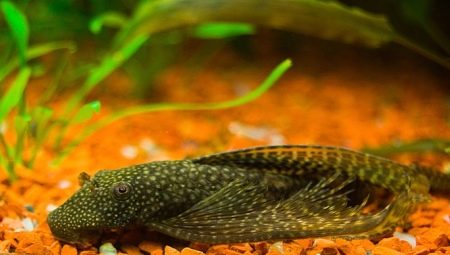Many aquarists prefer to breed not only miniature fish, but also decorative catfish in an artificial pond. These include veil antcistruses (dragonfly). The inhabitants of the depths are unpretentious in leaving and are distinguished by a peaceful disposition. Leopard and red catfish get along well with almost all types of aquarium fish.
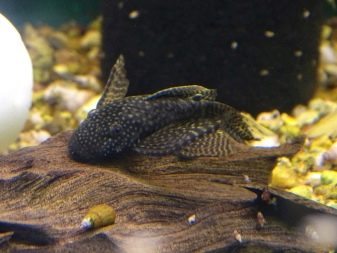
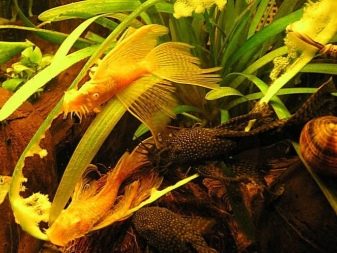
Characteristic
A beautiful variety of decorative catfish called antisistrus veil in vivo prefers South American rivers with a strong current. An unusual variety of aquarium catfish came to Russia only in the mid-70s of the last century. This fish is known for its unpretentiousness and is suitable even for beginner aquarists.
A characteristic feature of the variety are veil fins. The body of the catfish has a drop-shaped flattened shape, and bone plates can be seen on the back and sides. The fish is characterized by a wide head, and the mouth resembles a suction cup. Due to the individual structural features of the body, veil ancistruses are kept on driftwood and underwater cobblestones during the course. Powerful horn-shaped jaws allow fish to remove the remains of algae from the aquarium.
The color of the veil ancistruses is quite spectacular. At the leopard catfish, the body of a rich olive shade is decorated with numerous bright spots. The name “dragonfly” of the fish was due to elongated fins, which visually resemble a veil. A fish moving in an artificial pond looks like a well-known graceful insect with transparent wings. These inhabitants of the depths look bright and original.This explains their huge popularity among avid aquarists. There are also yellow, white and red ancistruses.
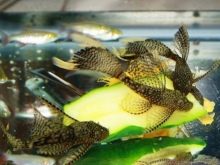
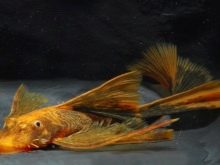

It is not difficult to distinguish a male from a female. The former are much slimmer than females. Also, “boys” have leathery growths on their heads. In an artificial pond, fish reach a length of 8–10 cm.
Soma suckers spend most of the time at the bottom of the aquarium, as they lack a swimming bladder. Veil anticistruses prefer to study the bottom and cling their mouths to various objects. ABOUTnor act as "Orderlies"cleaning the walls of the aquarium from algae.
Experts say that dragonfly can change sex. The reasons lie in adverse external factors, under the influence of which the female turns into a full-fledged male and performs his "male" functions.
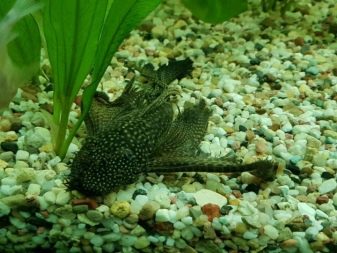
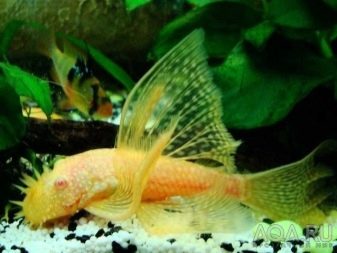
Maintenance and care
Veil ancistruses are quite simple to maintain. They do not feel discomfort while living in small aquariums, and do not require bright lighting. So, the rules for keeping the "dragonfly" are as follows:
- any aquarium from 50 liters;
- water temperature - from 20 to 25 degrees;
- stiffness - from 10 to 25;
- acidity - up to 7.5;
- powerful aeration and fluid filtration in the aquarium;
- weekly change of 1/3 of fresh water;
- moderate lighting (dim light is perfect).
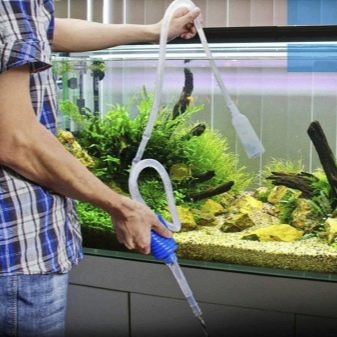
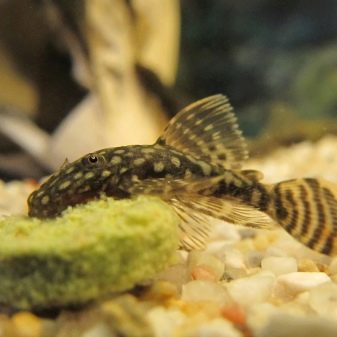
It is also desirable to create green zones in an artificial pond, since this species of fish likes to hide in thickets. Another important point: Antsistruses spend most of the time at the bottom, so the presence of snags and small stones on it is simply necessary.
Dragonfly catfish eats foods of plant origin. Fish are given fresh vegetables (cucumbers, zucchini and lettuce, previously scalded with boiling water), as well as dry food in the form of cereals and tablets. They feed the inhabitants of the depths with a bloodworm.
With insufficient feed, sucker catfish begin to absorb leaflets of aquarium plants.
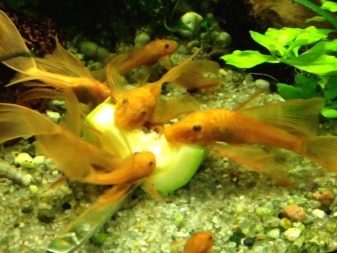
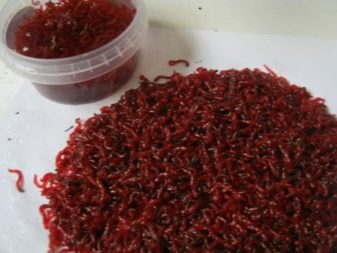
Compatibility and breeding
Veil Antcistruses are friendly in nature and do not show aggression to their aquarium neighbors. With them, you can safely contain almost all varieties of aquarium fish. However, ancistruses can enter into a “conflict” with large territorial cichlids. Besides, they can cause damage to small members of the goldfish family.
Breeding dragonflies is pretty easy. Decorative catfish reach puberty by 10-12 months and willingly "go" to spawn in a common aquarium. However, the pair that is preparing for breeding is best relocated to a separate container.
At the bottom of the temporary aquarium spread small ceramic tubes and snags. Spawning stimulate increasing water temperature, as well as its substitution. In most cases, the female “spawns” after one day. At one time, she sweeps from 60 to 80 eggs of bright red color. After spawning, the female is sent to a common "home", and the "father" protects the "offspring" until the fry appear. In the first days after birth, the young feed on stocks from the yolk sac, and then they begin to feed them with chopped tubule. In an artificial reservoir, veil anticistruses can live up to 7 years.
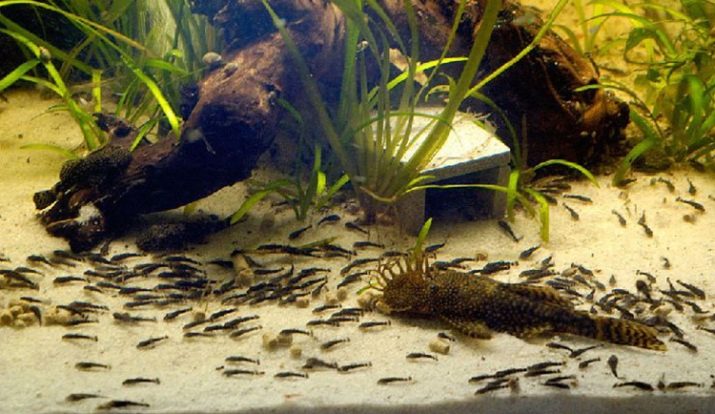
See how the Antcistrus veil looks in the next video.
